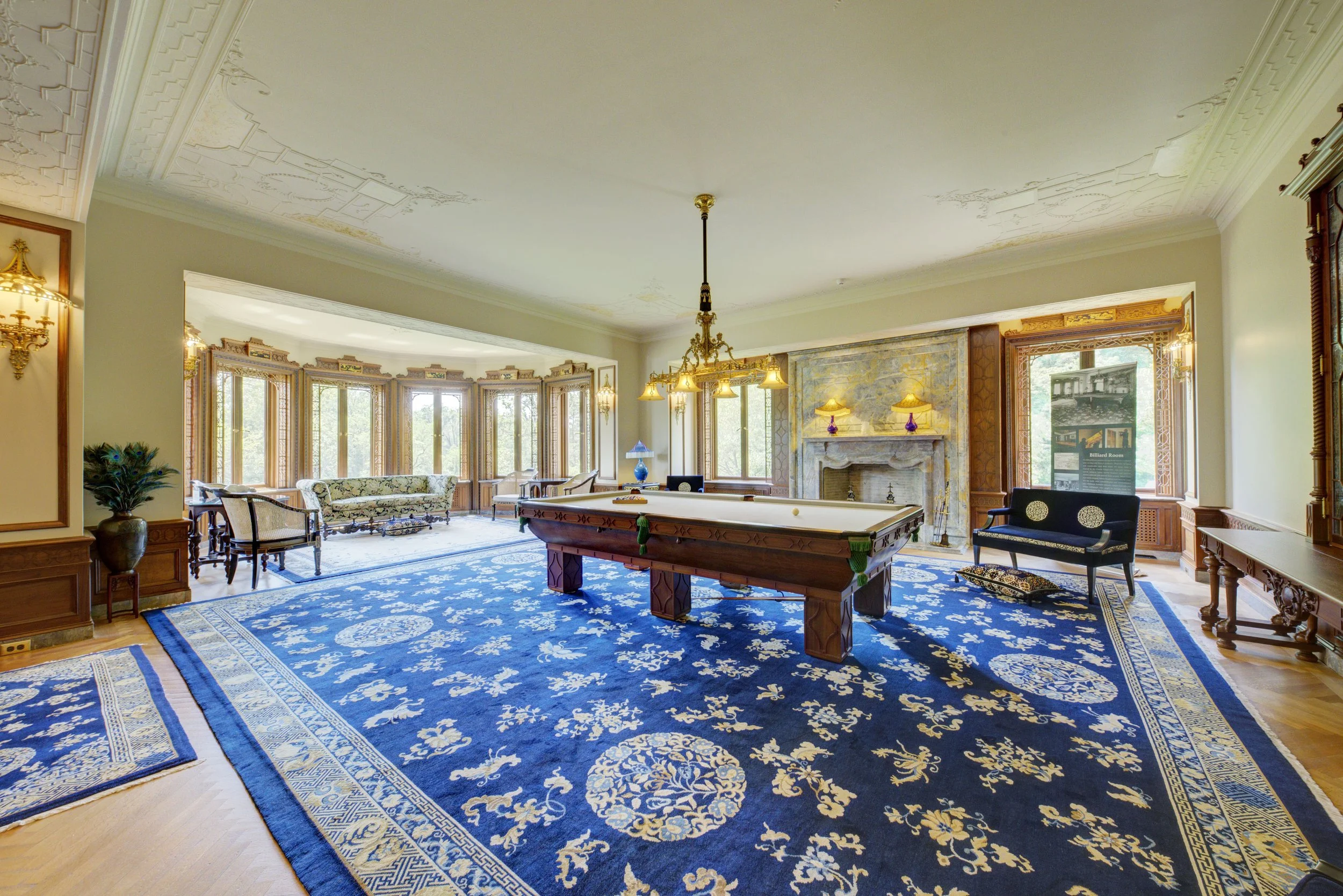
The Story
Discover the Story of Fair Lane
At the heart of Michigan’s rich history stands Fair Lane: the beloved home of Clara and Henry Ford. More than a residence, Fair Lane was a center of innovation, family life, and connection to the natural world.
Today, as restoration efforts bring new life to this historic estate, we invited you to explore the legacy that shaped Fair Lane — and the future we are preserving for generations to come.
The Estate
Nestled on 1,300 acres of farmland near their birthplaces, Fair Lane was the beloved home of Clara and Henry Ford from 1915 until their deaths. The Estate encompassed the Main Residence, Powerhouse, Potting Shed, Boathouse, and many supporting structures, featuring an eclectic collection of architectural styles. With prairie school influences from Marion Mahoney Griffin’s original design, Fair Lane was realized resembling an English castle under architect William Van Tine. Esteemed landscape architect Jens Jensen designed the gardens and grounds.
The sprawling 56-room Main Residence featured a single-lane bowling alley and indoor swimming pool. Connecting the Main Residence to the Powerhouse is a 300-foot underground service tunnel. The Powerhouse, designed with input from Henry’s friend and mentor, Thomas Alva Edison, includes a 12-car garage, originally equipped with an automotive turntable, a laboratory where Henry worked on cutting-edge engine designs, and hydroelectric turbines that once created enough energy to power the estate and a portion of the burgeoning town of Dearborn.
Fair Lane became more than a simple domestic haven for Clara and Henry Ford. It was a private laboratory space for Henry's tinkering and discoveries, a canvas for Clara's love of gardens, a retreat to discuss ideas with friends like Thomas Edison, Harvey Firestone, and John Burroughs, a hall for favorite pastimes like music and dance, and a place to gather their grandchildren to share their passions and dreams.
Fair Lane Today
After Clara Ford's death, most of the furnishings and original collections were removed. The house was then transferred to the Ford Motor Company and became its official archives. In 1957, Ford Motor Company donated the Estate to the University of Michigan to establish its Dearborn campus. The University of Michigan - Dearborn operated the Estate and 72 acres of land as a museum, restaurant, and events center before closing Fair Lane to the public in 2010.
In 2013, stewardship of the Estate was transferred to a newly established non-profit: Henry Ford Estate. Under the leadership of Board Chairman Edsel B. Ford II, an ambitious effort began to ensure the beloved home and legacy of Clara and Henry Ford endured. The Estate was operated under a shared management model with the Edsel and Eleanor Ford House in Grosse Pointe Shores until 2019. Today, Fair Lane functions independently.
To date, a small, hard-working team is skillfully restoring the gardens, grounds, and structures in partnership with artisans and craftspeople to authentically reflect the look and feel of the estate as Clara and Henry knew it in 1919. When complete, Fair Lane will offer visitors a unique experience to learn the extraordinary story of the Ford family in intimate settings throughout the estate, as if they are personal guests of Clara and Henry. This National Historic Landmark will serve as a living tribute to the Fords' enduring impact and a platform for future generations to connect with their legacy.










